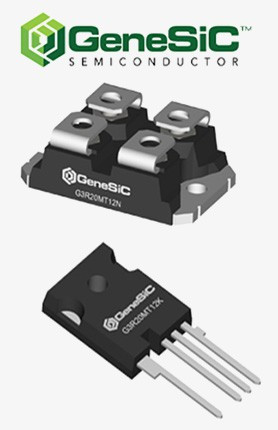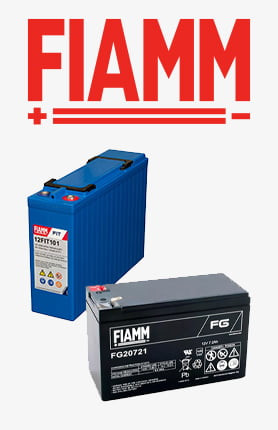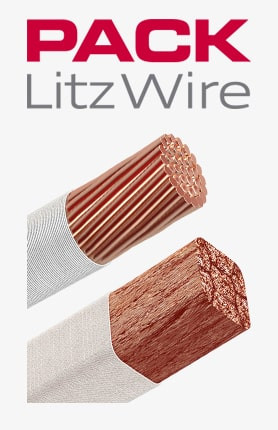-
BackX
-
Components
-
-
Category
-
Semiconductors
- Diodes
- Thyristors
-
Electro-insulated Modules
- Electro-insulated Modules | VISHAY (IR)
- Electro-insulated Modules | INFINEON (EUPEC)
- Electro-insulated Modules | Semikron
- Electro-insulated Modules | POWEREX
- Electro-insulated Modules | IXYS
- Electro-insulated Modules | POSEICO
- Electro-insulated Modules | ABB
- Electro-insulated Modules | TECHSEM
- Go to the subcategory
- Bridge Rectifiers
-
Transistors
- Transistors | GeneSiC
- SiC MOSFET Modules | Mitsubishi
- SiC MOSFET Modules | STARPOWER
- Module SiC MOSFET ABB’s
- IGBT Modules | MITSUBISHI
- Transistor Modules | MITSUBISHI
- MOSFET Modules | MITSUBISHI
- Transistor Modules | ABB
- IGBT Modules | POWEREX
- IGBT Modules | INFINEON (EUPEC)
- Silicon Carbide (SiC) semiconductor elements
- Go to the subcategory
- Gate Drivers
- Power Blocks
- Go to the subcategory
- Electrical Transducers
-
Passive components (capacitors, resistors, fuses, filters)
- Resistors
-
Fuses
- Miniature Fuses for electronic circuits - ABC & AGC Series
- Tubular Fast-acting Fuses
- Time-delay Fuse Links with GL/GG & AM characteristics
- Ultrafast Fuse Links
- Fast-acting Fuses (British & American standard)
- Fast-acting Fuses (European standard)
- Traction Fuses
- High-voltage Fuse Links
- Go to the subcategory
- Capacitors
- EMI Filters
- Supercapacitors
- Power surge protection
- Go to the subcategory
-
Relays and Contactors
- Relays and Contactors - Theory
- 3-Phase AC Semiconductor Relays
- DC Semiconductor Relays
- Controllers, Control Systems and Accessories
- Soft Starters and Reversible Relays
- Electromechanical Relays
- Contactors
- Rotary Switches
-
Single-Phase AC Semiconductor Relays
- AC ONE PHASE RELAYS 1 series| D2425 | D2450
- One phase semiconductor AC relays CWA and CWD series
- One phase semiconductor AC relays CMRA and CMRD series
- One phase semiconductor AC relays - PS series
- Double and quadruple semiconductor AC relays - D24 D, TD24 Q, H12D48 D series
- One phase semiconductor relays - gn series
- Ckr series single phase solid state relays
- One phase AC semiconductor relays for DIN bus - ERDA I ERAA series
- 150A AC single phase relays
- Rail Mountable Solid State Relays With Integrated Heat Sink - ENDA, ERDA1 / ERAA1 series
- Go to the subcategory
- Single-Phase AC Semiconductor Relays for PCBs
- Interface Relays
- Go to the subcategory
- Cores and Other Inductive Components
- Heatsinks, Varistors, Thermal Protection
- Fans
- Air Conditioning, Accessories for Electrical Cabinets, Coolers
-
Batteries, Chargers, Buffer Power Supplies and Inverters
- Batteries, Chargers - Theoretical Description
- Modular Li-ion Battery Building Blocks, Custom Batteries, BMS
- Batteries
- Battery Chargers and Accessories
- Uninterruptible Power Supply and Buffer Power Supplies
- Inverters and Photovoltaic Equipments
- Energy storage
- Fuel cells
- Lithium-ion batteries
- Go to the subcategory
-
Automatics
- Futaba Drone Parts
- Limit Switches, Microswitches
- Sensors, Transducers
-
Infrared Thermometers (Pyrometers)
- IR-TE Series - Water-proof Palm-sized Radiation Thermometer
- IR-TA Series - Handheld Type Radiation Thermometer
- IR-H Series - Handheld Type Radiation Thermometer
- IR-BA Series - High-speed Compact Radiation Thermometer
- IR-FA Series - Fiber Optic Radiation Thermometer
- IR-BZ Series - Compact Infrared Thermometers
- Go to the subcategory
- Counters, Time Relays, Panel Meters
- Industrial Protection Devices
- Light and Sound Signalling
- Thermographic Camera
- LED Displays
- Control Equipments
-
Recorders
- Hybrid Recorders - AL3000 Series | CHINO
- Graphic Recorder - KR2000 Series | CHINO
- Ubiquitous Recorders - KR5000 Series | CHINO
- Palm-sized Temperature/Humidity Meters - HN-CH Series | CHINO
- Consumables for Recorders
- 71VR1 - Compact Paperless Recorder | M-SYSTEM
- Graphic Recorder - KR3000 Series | CHINO
- PC Recorders - R1M Series | M-SYSTEM
- PC Recorders - R2M Series | M-SYSTEM
- PC Recorders - RZMS Series | M-SYSTEM
- PC Recorders - RZUS Series | M-SYSTEM
- Go to the subcategory
- Go to the subcategory
-
Cables, Litz wires, Conduits, Flexible connections
- Wires
- Litz wires
- Cables for extreme applications
- Sleevings
-
Braids
- Flat Braids
- Round Braids
- Very Flexible Flat Braids
- Very Flexible Round Braids
- Cylindrical Cooper Braids
- Cylindrical Cooper Braids and Sleevings
- Flexible Earthing Connections
- Galvanized and Stainless Steel Cylindrical Braids
- PCV Insulated Copper Braids (temp. up to 85C)
- Flat Aluminium Braids
- Junction Set - Braids and Tubes
- Go to the subcategory
- Traction Equipment
- Cable Terminals
- Flexible Insulated Busbars
- Flexible Multilayer Busbars
- Cable Duct Systems
- Hoses
- Go to the subcategory
- View all categories
-
Semiconductors
-
-
- Suppliers
-
Applications
- CNC Machine Tools
- DC and AC Drives (Inverters)
- Energetics
- Energy bank
- Equipment and Components for Hazardous Areas [Ex]
- Equipment for Distribution, Control and Telecommunications Cabinets
- HVAC Automation
- Induction Heating
- Industrial Automation
- Industrial Protective Devices
- Machines for Drying and Wood Processing
- Machines for Thermoforming Plastics
- Mining, Metallurgy and Foundry
- Motors and Transformers
- Power Supplies (UPS) and Rectifier Systems
- Printing
- Temperature Measurement and Regulation
- Test and Laboratory Measurements
- Tram and Railway Traction
- Welding Machines
-
Assembly
-
-
Inductors
-
-
Induction devices
-
-
https://www.dacpol.eu/pl/naprawy-i-modernizacje
-
-
Service
-
- Contact
- Zobacz wszystkie kategorie
Measuring power and energy in electric circuits

Measuring power and energy in electric circuits
Power meters and network parameter analyzers are intended for identifying anomalies of power supply in single-phase or triple-phase networks. They enable power and energy analysis, and also quality control of electrical power. They can also be used for continuously recording measured values and identifying various occurring events. These tools are useful for applications in all industrial and individual sectors with different levels of preciseness and standards (e.g. in compliance with norms like IEC 61000, IEC 61010, EN 50160). The market of these devices is very broad.
Simple measurements
In the simplest versions of network analyzers are used in single-phase or triple-phase, triple-phase circuits or four-circuit with a possibility of data transmission through a communication interface (e.g. ModBUS, Ethernet) of all main characteristic values for electricity networks, including counting out active and passive energy (just like an electric energy meter). In some cases they have programmable alarms or impulse outputs for retransmission of parameters. Often the measurement of basic values (currents and voltages) is conducted with a sampling method, which allows for proper measurement of the true effective value (TRMS) even during deformed processes - being more and more common in modern electric installations.
Electrical disruptions monitoring
Two types of network disruptions should be monitored: permanent and occasional. The first ones can be observed through clamp multimeters with measurements of true effective value and oscilloscopes with differential inputs. In the case of occasional disruptions it is recommended to use network parameters analyzers. To detect recurring disruptions, it is common to measure true effective value with a multi function device or clamp multimeter and displaying the process of three phases by the usage of an oscilloscope with a differential input.
Electrical energy quality testing and problem-solving
On the market, two basic categories of energy quality analyzers are available: for verification of delivered voltage (with detection of harmonic and flicker light) and for solving problems. The first one is an effective statistical tool, but do not solve problems due to occasional disruptions. The second one provides long-term monitoring with automatic recording of current and voltage processes disrupted periods. The purpose of monitoring is to capture events which caused problems. Another, also important issue, is localization of network disruption analyzers. A good practice is to monitor the power supply system as the most sensitive equipment.
Analyzers are intended for solving problems, additionally to the continuous monitoring, generally providing additional functions such as network insulation from grounding (helpful with further increasing of the safety and cost level) and automatically identifying insulation errors (can occur during work). Increases the flexibility of the production workplace and minimizes outages.
Harmonic analysis
The usage of analyzers in installations is also useful for detection of effects of harmonic and undetermined states. Rapid change in the powering voltage process caused by a breakdown leads to values within limits of several thousand volts. Switching climaxes of power converters also cause intermittent effects. Low voltages, with which modern microelectronic devices work, make them more susceptible to disruptions in the power network. Apart from the effect on these electronic devices, these states can also cause disruptions in data or control systems. Another problem, considering a significant number of industrial and consumer devices working with rectifying systems, is the implementation of harmonic into public networks (distribution).
Vectorial analysis
Finally, we have to take into consideration precise devices verifying electric parameters and vector analysis of circuits (VNA). They are based on one of the main measuring methods applied in the sector of radio and microwave frequencies. These systems allow for analysis of active and passive components, such as filters, amplifiers, mixers and multiport modules.
Vector network analyzers are optimized in terms of high speed of measurement, using frequency scanning, thanks to which the results are acquired faster than while using a single source signal connected to the receiver, such as the spectrum analyzer. Thanks to the operation of calibration, vector network analyzers provide the highest level of preciseness while measuring elements of radio frequencies.
Author: Maciej Dumania – DACPOL
Related posts
 Now available – DC/DC converters from PREMIUM
Now available – DC/DC converters from PREMIUM
 New release in DACPOL lighting for lathes – Kira covers
New release in DACPOL lighting for lathes – Kira covers




Leave a comment